
Goldwyn Pictures Corporation was an American motion picture production company that operated from 1916 to 1924 when it was merged with two other production companies to form the major studio, Metro-Goldwyn-Mayer. It was founded on November 19, 1916, by Samuel Goldfish, an executive at Lasky's Feature Play Company, and Broadway producer brothers Edgar and Archibald Selwyn, using an amalgamation of both last names to name the company.

Therese Ann Rutherford was a Canadian-born American actress in film, radio, and television. She had a long career starring and co-starring in films, playing Polly Benedict during the 1930s and 1940s in the Andy Hardy series, and appearing as one of Scarlett O'Hara's sisters, Careen O'Hara in the film Gone with the Wind (1939).

Lucille La Verne Mitchum was an American actress known for her appearances in early sound films, as well as for her triumphs on the American stage. She is most widely remembered as the voice of the first Disney villain, Queen Grimhilde in Snow White and the Seven Dwarfs (1937), Walt Disney's first full-length animated feature film.
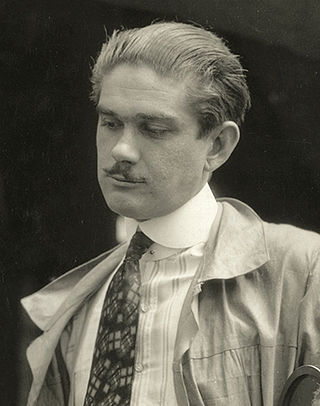
George William Hill was an American film director and cinematographer.

Till the Clouds Roll By is a 1946 American Technicolor musical film produced by Metro-Goldwyn-Mayer and a fictionalized biopic of composer Jerome Kern, portrayed by Robert Walker. Kern was involved with the production, but died before its completion. It was the first in a series of MGM biopics about Broadway composers.

Robert Zigler Leonard was an American film director, actor, producer, and screenwriter.
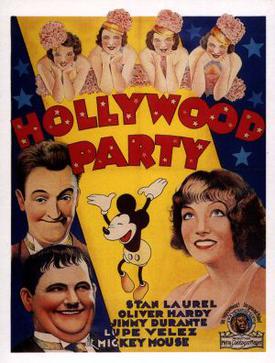
Hollywood Party, also known under its working title of The Hollywood Revue of 1933 and Star Spangled Banquet, is a 1934 American pre-Code musical film starring Laurel and Hardy, The Three Stooges, Jimmy Durante, Lupe Vélez and Mickey Mouse. It was distributed by Metro-Goldwyn-Mayer. Each sequence featured a different star with a separate scriptwriter and director assigned.
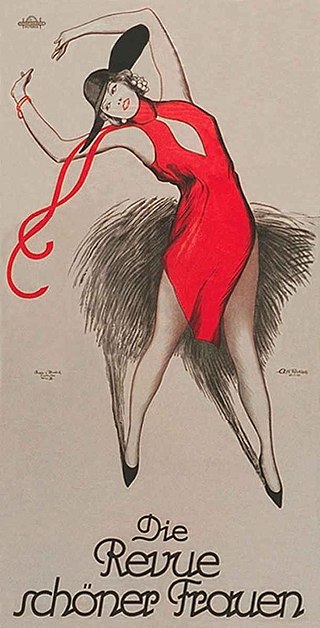
Pretty Ladies is a 1925 American silent comedy drama film starring ZaSu Pitts and released by Metro-Goldwyn-Mayer. The film is a fictional recreation of the famed Ziegfeld Follies. Directed by Monta Bell, the film was written by Alice D. G. Miller and featured intertitles by Joseph Farnham. Pretty Ladies originally featured musical color sequences, some in two-color Technicolor. However, the color sequences are now considered lost.

Polly of the Circus is a 1932 American pre-Code MGM drama film directed by Alfred Santell and starring Marion Davies and Clark Gable.

Girl 27 is a 2007 documentary film by writer/director David Stenn about the 1937 rape of dancer and occasional movie extra Patricia Douglas (1917–2003) at a Metro-Goldwyn-Mayer exhibitors' convention, the front-page news stories that followed, and the studio's subsequent cover-up of the crime. Also covered in the film are a similar assault on singer Eloise Spann and her subsequent suicide, and the better-known scandal involving actress Loretta Young and her "adopted" daughter Judy Lewis, the product of her date rape by Clark Gable during the production of The Call of the Wild.
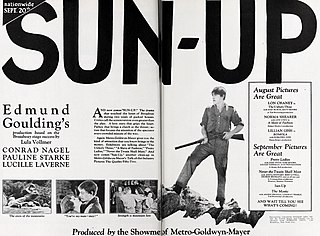
Sun-Up is a 1925 American silent drama film directed by Edmund Goulding based upon a successful 1924 play of the same name by Lula Vollmer. The film stars Lucille La Verne, replaying her successful New York stage role, Pauline Starke, and Conrad Nagel.

A Kiss for Cinderella is a 1925 American silent fantasy film taken from the based upon a fairy tale Cinderella and 1916 stage play by James M. Barrie. The film stars Betty Bronson and Tom Moore and was made at Paramount's Astoria Studios in Astoria, Queens. The play had starred stage actress Maude Adams in the Bronson role. The film was seen by Walt Disney, and inspired him to create his company's 1950 animated adaptation.

The Glorious Adventure is a lost 1918 American silent drama film directed by Hobart Henley.
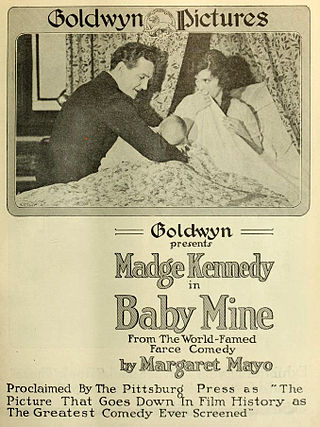
Baby Mine is a 1917 American silent comedy film directed by both John S. Robertson and Hugo Ballin and starring Madge Kennedy. The picture marked Kennedy's screen debut and was one of the first films produced by Samuel Goldwyn as an independent after founding his own studio.
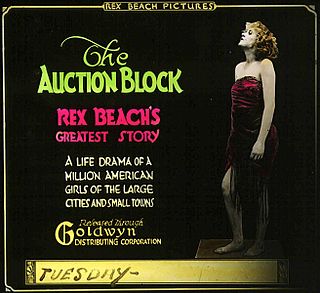
The Auction Block is a 1917 American silent drama film directed by Laurence Trimble and starring Rubye De Remer. The film was produced by Rex Beach, upon whose novel, The Auction Block, the film is based. It is not known whether the film survives. The film was remade as a comedy in 1926 by Metro-Goldwyn-Mayer starring Charles Ray and Eleanor Boardman.

Charles Eldridge was an American stage and screen actor of the late 19th and early 20th centuries.
Polly of the Circus may refer to:

Spotlight Sadie is a lost 1919 American silent film drama directed by Laurence Trimble and starring Mae Marsh and Wallace MacDonald. It was produced and distributed by Goldwyn Pictures. It was alternately known as The Saintly Show Girl.

Five Thousand an Hour is a 1918 American silent comedy-drama film, directed by Ralph Ince. It stars Hale Hamilton, Lucille Lee Stewart, and Gilbert Douglas, and was released on November 25, 1918.

Polly of the Circus was a 1907 Broadway play by Margaret Mayo which starred Mabel Taliaferro and was produced by Taliaferro's husband, Frederic Thompson. A circus girl/minister love story known for its drama and its spectacle staging, the cast also included Edith Taliaferro, Herbert Ayling, Joseph Brennan, Mattie Ferguson, John Findlay, Guy Nichols, Ida St. Leon and Malcolm Williams.



















